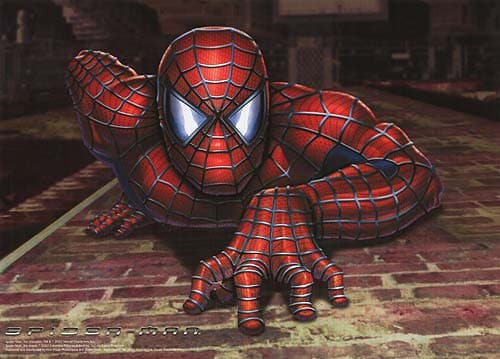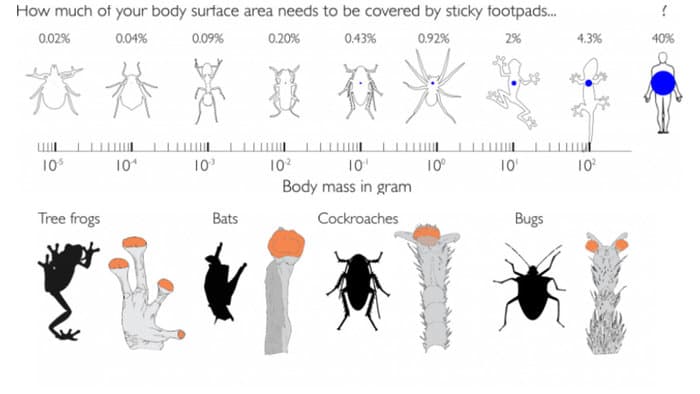Why can’t Spider-man exist in real life? Cambridge report reveals the truth behind wall climbing
Dr David Labonte and his colleagues at the University of Cambridge’s Zoology Department have, much to the disappointment of fans, revealed that Spider-man cannot exist in the real world! The team’s latest findings show that humans would need adhesive pads that cover 40% of the body surface to climb up a wall like the legendry comic superhero hero Spider Man. The research was published in the proceedings of the National Academy of Sciences (PNAS).

The study reveals that geckos, which are officially considered as the largest wall-climbing animals are covered by 200 times more adhesive pads than tiny mites. However, for humans to recreate the ‘Spiderman’ effect, 80% of the front surface of the body would have to be covered in sticky foot pads. Morphologically, that would create an unnecessary burden on the human body and would contradict the trend of evolution. For such reasons, scientists rejected the possibility of spider-man like features in a human.

Gecko feet in different scale and imaging technique
Walter Federle, senior author from Cambridge’s Department of Zoology explained, that in order to climb walls, humans must have impractically large feet (shoe size: European size 145 or US size 114). Body size is inversely proportional to the amount of body surface area per unit volume. This reveals that increment in its size, allows less surface area to be covered by sticky footpads. The researchers compared the weight and footpad size of 225 climbing animal species including insects, frogs, spiders, lizards and even certain mammals.

Type of sticky pads
Labonte claimed that many dissimilar animals bear similar sticky feet. Though the animals are of different taxa, their feet follow the same principle and displays a similar structure. The researchers explained that the presence of sticky pads is a very good example of converging evolution. The team asserted that these insights into the size limits of sticky footpads could have profound implications in the process of developing large-scale bio-inspired adhesives, which are currently only effective on very small areas.
The future plan of this team is to study the nature of adhesives, which might open the gate for engineering large-scale and powerful, but at the same time controllable adhesives. The research has been funded by research grants from the UK Biotechnology and Biological Sciences Research Council (BB/I008667/1), the Human Frontier Science Programme (RGP0034/2012), the Denman Baynes Senior Research Fellowship, and the Discovery Early Career Research Fellowship (DE120101503).
Source: <a href="https://www.cam.ac.uk/research/news/why-spider-man-cant-exist-geckos-are-size-limit-for-sticking-to-walls" target="_blank" rel="nofollow noopener noreferrer">Why Spider-Man can’t exist: Geckos are ‘size limit’ for sticking to walls | University of Cambridge</a> | #-Link-Snipped-#

The study reveals that geckos, which are officially considered as the largest wall-climbing animals are covered by 200 times more adhesive pads than tiny mites. However, for humans to recreate the ‘Spiderman’ effect, 80% of the front surface of the body would have to be covered in sticky foot pads. Morphologically, that would create an unnecessary burden on the human body and would contradict the trend of evolution. For such reasons, scientists rejected the possibility of spider-man like features in a human.

Gecko feet in different scale and imaging technique

Type of sticky pads
The future plan of this team is to study the nature of adhesives, which might open the gate for engineering large-scale and powerful, but at the same time controllable adhesives. The research has been funded by research grants from the UK Biotechnology and Biological Sciences Research Council (BB/I008667/1), the Human Frontier Science Programme (RGP0034/2012), the Denman Baynes Senior Research Fellowship, and the Discovery Early Career Research Fellowship (DE120101503).
Source: <a href="https://www.cam.ac.uk/research/news/why-spider-man-cant-exist-geckos-are-size-limit-for-sticking-to-walls" target="_blank" rel="nofollow noopener noreferrer">Why Spider-Man can’t exist: Geckos are ‘size limit’ for sticking to walls | University of Cambridge</a> | #-Link-Snipped-#
0

